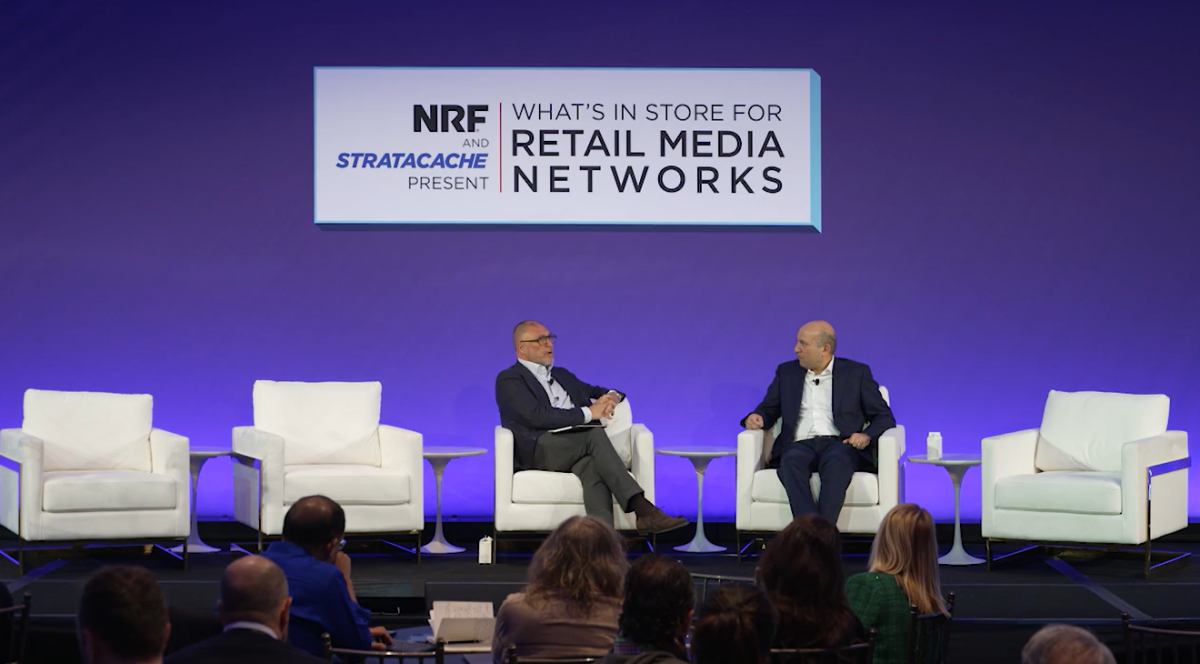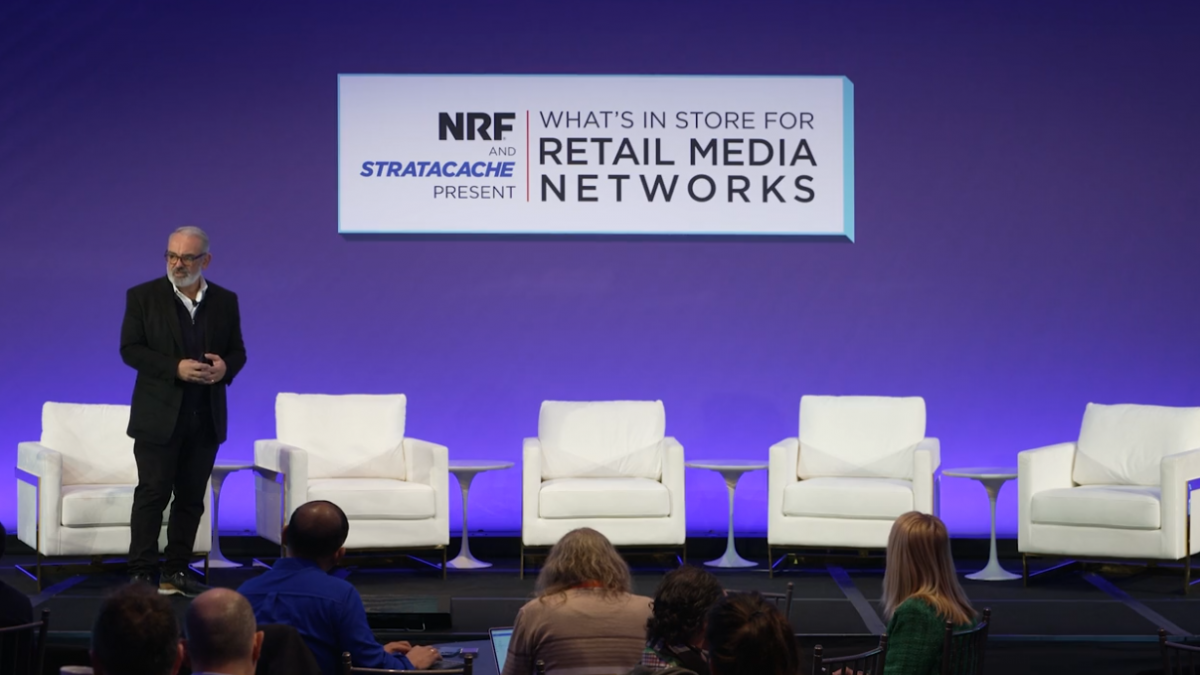Retail Media as an Organizational Principle: Lessons from Costco
Mark Williamson, who leads retail media at Costco, shared insights into how the company approaches retail media as an extension of its core business rather than just another revenue stream. The presentation he made at STRATACACHE’s What’s in Store for Retail Media Networks event, presented in partnership with NRF, Retail Media as an Organizational Principle, made a compelling case for aligning retail media with a retailer’s foundational model to drive long-term growth.
Retail Media: More Than Just a Profit Center
Williamson began by reinforcing that Costco’s primary business isn’t just selling goods — it’s selling memberships. This principle shapes every business decision, including how Costco approaches retail media. Unlike some retailers that view media networks as standalone profit centers, Costco integrates retail media to enhance the membership value proposition, ensuring that it ultimately serves its broader business model.
He illustrated this philosophy by walking the audience through the typical Costco shopping experience — where a trip to pick up essentials like milk or eggs often leads to the discovery (and purchase) of unexpected items, from kayaks to luxury skincare products. This “treasure hunt” model, he explained, is what makes Costco unique and is a fundamental pillar of its retail media strategy.
A New Perspective on Retail Media Investment
Rather than using retail media to maximise short-term profits, Costco leverages it to reinforce the core membership model. According to Williamson, retail media must align with three key goals:
- Growing the Member Base – Attracting new members through strategic advertising and partnerships.
- Driving Traffic – Encouraging more frequent visits by highlighting high-value products and promotions.
- Increasing Sales – Boosting revenue through data-driven, targeted media campaigns that drive in-store and online purchases.
To achieve this, Costco collaborates with suppliers to create advertising campaigns that highlight product value while maintaining the brand trust Costco has built with its members. Retail media investments aren’t just about ad impressions or clicks — they must drive measurable business outcomes such as higher foot traffic and stronger membership retention rates.
The Role of Data and Personalisation
While Costco is known for its mass merchandising approach, retail media presents an opportunity to enhance personalisation. Williamson described how Costco is using data and ad tech to “spearfish” rather than cast wide nets. By analysing purchase patterns, they can identify members who might be interested in specific categories they haven’t shopped before or re-engage those whose spending in certain departments has declined.
For example, a Costco member who regularly buys household staples but has never purchased skincare products could be introduced to a new brand through a well-placed retail media campaign. Likewise, lapsed shoppers could be incentivised to return with targeted promotions. By fine-tuning how they use data, Costco aims to create a more tailored and effective member experience without deviating from its core value proposition.
Reinforcing Membership Value Through Retail Media
The overarching takeaway from Williamson’s presentation was clear: Costco sees retail media as a tool for reinforcing its membership model rather than simply monetising its audience. Any profits generated from retail media are reinvested back into the business — primarily by supporting merchants in lowering prices and increasing product value. This approach ensures that members continue to see Costco as a place where they receive unbeatable quality at the lowest possible prices.
As the retail media landscape evolves, Williamson’s insights serve as a reminder that a successful retail media network must be more than a revenue generator — it should enhance a retailer’s core business, build deeper customer loyalty, and drive long-term growth. For retailers looking to build or refine their media strategies, Costco’s member-first philosophy offers a compelling blueprint for success.
You can see the full keynote presentation here








